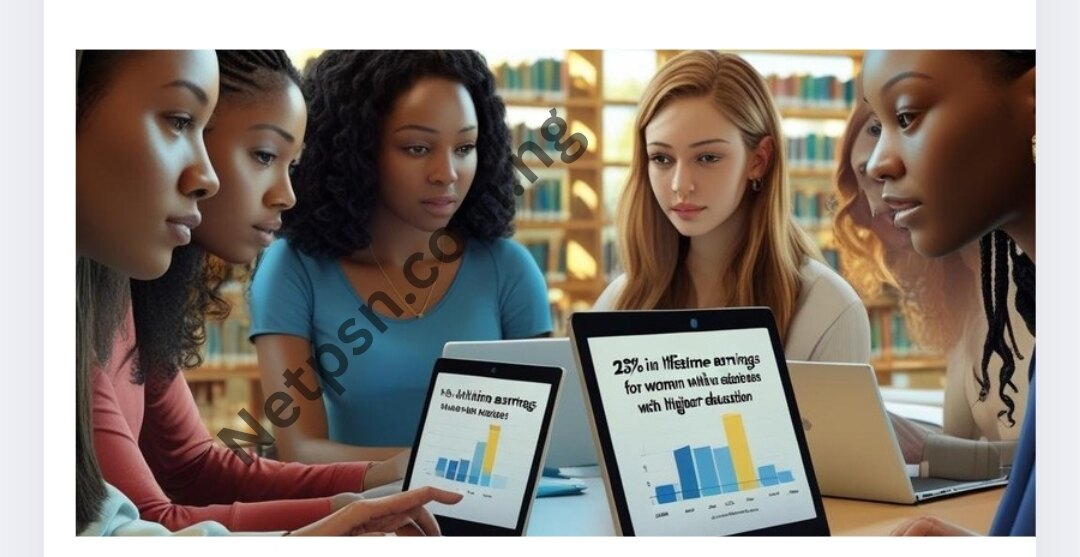15 Compelling Reasons Why Female Education is Better Than Male Education. Find out 15 strong reasons why girls’ education is better than boys’. A study-based look at how educating women and girls leads to better economic returns, health benefits, and social impact.
Why Female Education is Better Than Male Education: Everything You Need Know
Introduction
There has been a lot of talk about whether female education is better than male education in recent years, especially since global statistics show that educating women and girls can have a huge impact. This in-depth study looks at 15 evidence-based reasons why investing in female education is better for individuals, families, and whole communities than investing in male education. Both male and female education are important for the growth of society.
Read Also: Steps to Write a Compelling Job Application Letter for Teachers in 2025
Recent world bank data shows that in many countries, more than 5 percentage points more women than men are enrolling in higher education. This shows a big change in educational trends. This article talks about why this trend is more than just a change in the numbers; it’s a fundamental improvement in how we approach education for the greatest benefit to society.
The Effect of Educating Women on the Economy
1. Better returns on investments
The World Bank says that women who only go to secondary school for one year see their wages go up by 25% later in life. This one number shows that educating women is better for the economy. Educated women don’t just make more money; they also help the economy grow faster.

Even the gross domestic product (GDP) goes up by 0.3 percentage points for every percentage point increase in the number of women who go to school. This multiplier effect makes investing in women’s education a better way to help the economy grow.
2. Better planning and managing money
Women with an education are always better at managing money than men. Studies show that women are more likely to: – Put money aside for emergencies
– Spend money on their children’s education – Make smart choices about money in the home
– Help the family’s finances stay stable over time
3. Lower rates of poverty
For many years, research has shown that educating girls and women helps to reduce poverty faster. This faster reduction in poverty happens because educated women are more likely to lift whole families out of poverty by making smart decisions and contributing to the economy.
4. More successful entrepreneurship
Studies show that women who have been to school are better entrepreneurs because their businesses are more likely to survive and grow in a way that lasts. They are better at assessing risks, managing customer relationships, and making long-term plans for their businesses.
Benefits for the Community and Society
5. Better community development
Girls who go to school are less likely to get married young and more likely to live healthy, productive lives. They make more money, have a say in the decisions that affect them the most, and make better futures for themselves and their families. This effect on the whole community causes a chain reaction of good change.
6. Better outcomes for families and raising children
Mothers who have been to school are more likely to: – Make sure their kids get a good education – Make smart health care choices for their families
– Make homes that are stable and caring
– End cycles of poverty and disadvantage
7. Less crime and social problems
Communities where more women go to school have lower crime rates, less domestic violence, and fewer social problems. Women who are educated are more likely to settle disagreements peacefully and help keep the peace in their communities.
8. More people able to vote
Girls’ education makes economies and democracies stronger. Women who are educated are more involved in democratic processes, make better choices when they vote, and help improve the way government works.
Health and Well-Being Benefits
9. Better health outcomes
Communities have fewer deaths of mothers and children and less malnutrition when girls go to school. This huge improvement in health outcomes shows how important it is for women to get an education.
10. Making better choices about healthcare
Girls are better able to make health care decisions for themselves and their families, and they are more likely to see ways that public services in their communities could be better. This improved understanding of health care helps whole communities.
11. Fewer deaths of children
A girl can make up to 20% more money as an adult for every extra year she spends in school. Also, mothers who are educated have much lower child mortality rates. One of the strongest links in development research is between a mother’s education and her child’s survival.
12. Health awareness and HIV prevention
Communities with more educated women have less violence, less child death, better maternal health, and less HIV. Women who are educated are more likely to act in ways that are safe and teach others about health risks.
Statistics on Educational Performance
13. Better grades in school
In a lot of countries, more girls than boys go to secondary school. This pattern keeps going in college, where women always show:
– More students graduate – Students do better in school – Students stick with hard subjects longer
– More people finishing their degree programs
14. Better retention and use of what you learn
Studies show that educated women are more likely to: – Use what they know in real-life situations
– Keep learning throughout their lives – Share what they know with others in their communities – Be able to change with the times in terms of social and economic conditions
Making Decisions and Leading
15. Better leadership skills
They make more money, have a say in the decisions that affect them the most, and make their and their families’ futures better.

Women who are educated are better leaders in many ways, such as:
– Better decision-making when working together – Leadership styles that are more inclusive
– Better emotional intelligence in managers – Better skills for resolving conflicts
– Thinking about the long term
Women leaders who are well-educated always do better than men in areas like building teams, making ethical decisions, and running businesses in a way that is good for the environment.
How Female Education Multiplies
The evidence is clear: educating women has a positive effect on whole societies. Women who get an education don’t just make their own lives better; they also make their families, communities, and countries better. In terms of social return on investment, this complete change makes female education a better investment than male education.
The World Bank says that our 162 active projects (as of February 2024) are helping more than 150 million girls and young women around the world. This shows that people around the world know that female education has a bigger impact.
Frequently Asked Questions
1. Is it really more important for girls to go to school than for boys?
Both male and female education are important, but research shows that investing in female education pays off more for society. Educating women has a multiplier effect that leads to less poverty, better health, and faster economic growth. This makes it a higher priority for development.
2. What are the most important economic benefits of educating women?
The economic benefits include: a 25% increase in wages after just one year of secondary school, a 0.3 percentage point increase in GDP for every percentage point increase in female education participation, better money management, lower poverty rates, and more successful businesses.
3. What effect does educating women have on the health and death rates of children?
Mothers who have been educated are less likely to have children die, make better healthcare decisions, make sure their children get the right food, and are more likely to get medical help when they need it. There are fewer deaths of mothers and children in communities where more women go to school.
4. Why do women with more education do better in their families?
Women who are educated are more likely to put off getting married, have fewer kids, spend money on their kids’ education, make smart health decisions, and make their families stable. They also know how to deal with problems better and help make decisions in the home more effectively.
5. What is the worldwide trend in the number of women and men who go to school?
Recent data shows that in many countries, more women than men are now enrolling in higher education. In many countries, more girls than boys are enrolled in secondary school. This shows that there has been a big change toward recognizing the greater value of girls’ education.
Conclusion
The evidence is clear: female education always has more benefits for society, the economy, and people’s lives than male education. Educating women and girls is one of the best things any society can do. It can help reduce poverty, improve health outcomes, boost economies, and increase democratic participation.
The 15 reasons given in this analysis show that educating girls isn’t just about gender equality; it’s also about making the most of people’s potential and building a better future. As we work to solve problems around the world, putting more emphasis on educating women is the best way to make communities around the world stronger, healthier, and more prosperous.
There may still be a debate, but the data is clear: female education is just better than male education when it comes to making a difference and getting a good return on investment.














+ There are no comments
Add yours